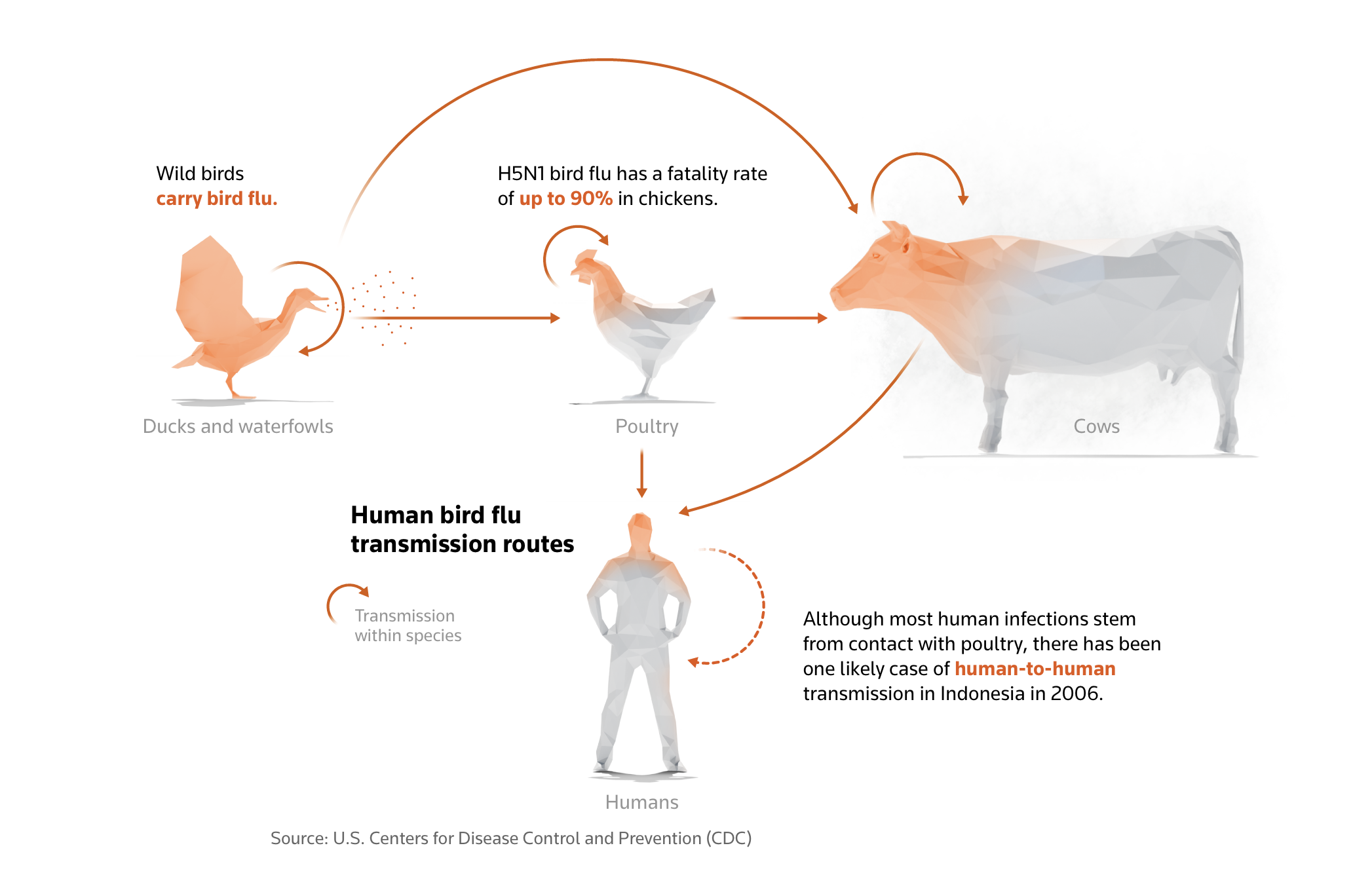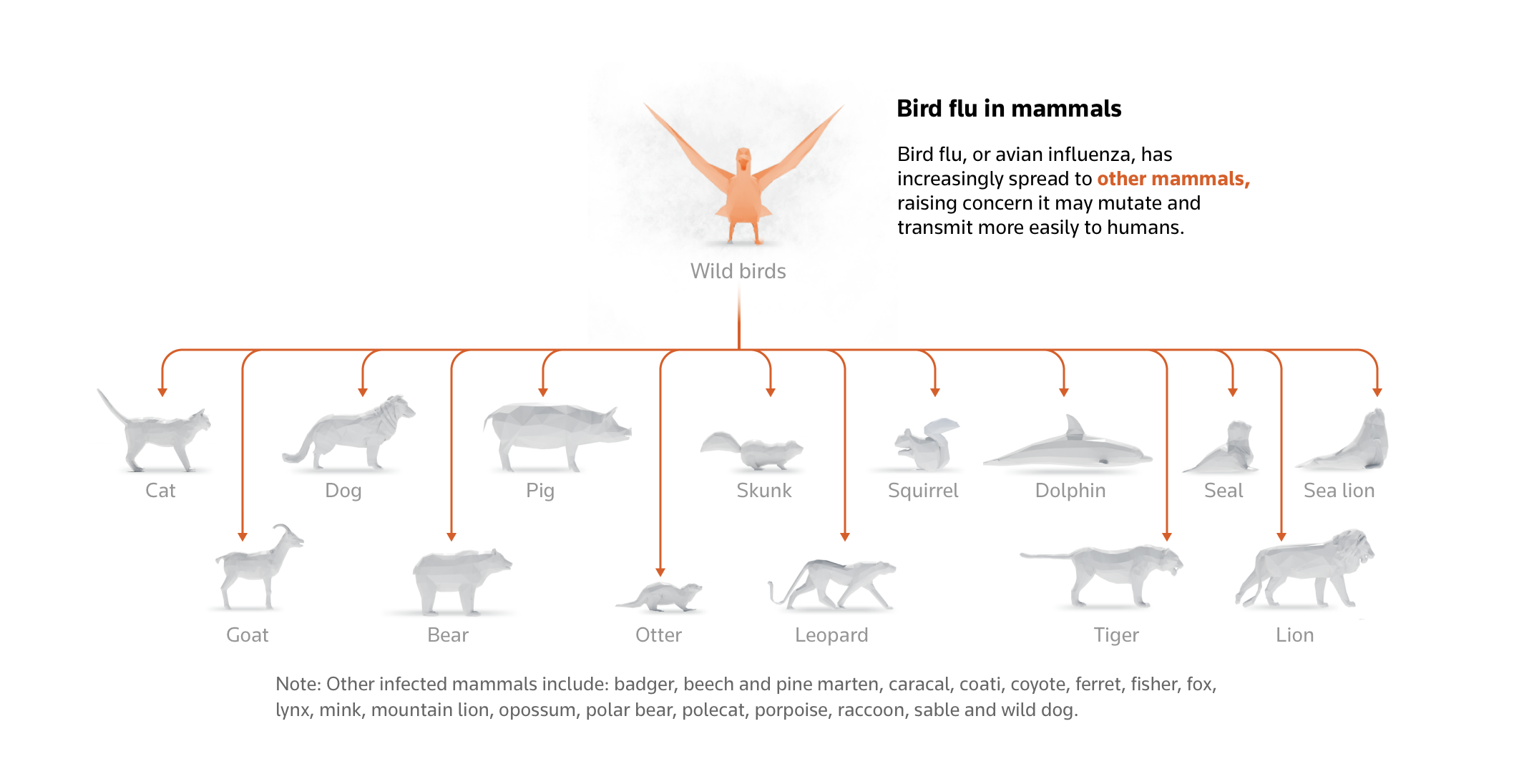Unravel the mystery of bird flu transmission to humans. Discover how you can and can’t contract it, and learn to protect yourself effectively.
Scientists are currently keeping a close watch for any changes in the H5N1, commonly known as bird flu, that could indicate its adaptation for human transmission. Known to cause severe and sometimes fatal infections in people, this virus is a significant entry on the list of pandemics with potential. Any spreading to another mammalian species is indeed a worrisome event.

Recently, a bird flu outbreak in the United States’ cattle herds led to the first ever reported case of transmission between a cow and a human. This occurred after a farm worker in Texas contracted the virus. Until this point, the transmission of the virus to humans had mostly been through intimate interaction with wild birds or infected poultry.
“The continuing spread of bird flu to a growing number of species and its expanding geographic scope have heightened the risks of humans becoming infected by the virus,” warns the World Organisation for Animal Health (WOAH).
The virus causing infections in cattle is the same subtype that has been infecting wild birds and poultry globally, resulting in deaths among various mammal species, likely due to the consumption of ill or dead birds. The WOAH raises concern citing the incident in February where a lethal type of bird flu was identified in Antarctica’s mainland for the first time, creating potential risks for the vast penguin colonies in the southern region.

Since H5N1’s first sighting in South America in 2022, the bird flu has killed dolphins, about 50,000 seals and sea lions along the shores, and approximately half a million birds in Chile and Peru.
Although bird flu infections in humans are rare, they can result in dire consequences when they do occur. According to the World Health Organization (WHO), from 2003 to 2024, there were 889 H5N1 cases in humans. Of these, 52% or 463 cases, led to death.
In efforts to contain the further spread of the first known H5N1 outbreak in dairy cows, which has expanded to herds in nine states and infiltrated the country’s milk supply, US officials have heightened measures. So far, there is evidence for cow-to-cow, cow-to-poultry, and cow-to-human transmission from cases of wild bird-to-cow transmission. However, there is no proof of human-to-human transmission.
Scientists speculate that, due to the heavy viral load found in milk and mammary glands, the virus might spread between cattle during the milking process. This can either be through contact with the infected equipment or with the virus that turns aerosolised during cleaning procedures.
A nationwide survey found H5N1 virus particles in one out of five commercial milk samples. However, the U.S. Food and Drug Administration (FDA) has assured that the virus found in milk does not pose a risk to human health, as pasteurisation effectively eradicates the virus.
“I’m not worried about the milk itself,” says Samuel Alcaine, an Associate Professor of Food Science at Cornell University. “It does indicate that the virus is more widespread among dairies than we had previously thought.”
However, the WHO warns that there is a risk of H5N1 bird flu spreading to cows in countries beyond the United Statesvia migratory birds. This bird flu scenario, thus, remains a serious global health concern.









